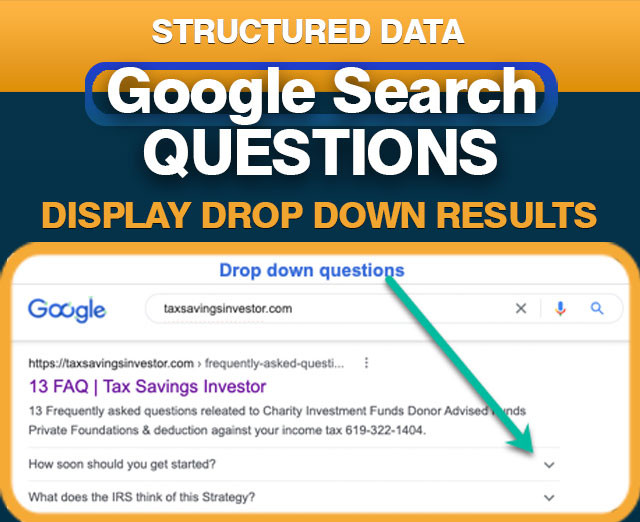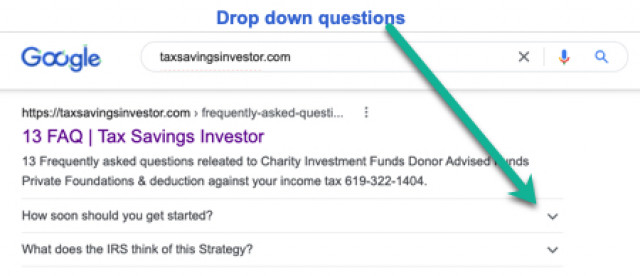Structured Data For Visual Content
- Posted on November 04, 2021
- Technology
- By Russell Richardson
- 2165 Views
Content and Context of a Webpage
Relevance and Visibility with Structured Data
The Benefits of Structured Data
By creating structured data for a website, Google will index a website more effectively. Google uses structured data to better understand the items on a page and find out where that page is more relevant within search results. When web pages have structured data, site pages help relay on-page factors such as images that are in the subject of the page.
Visual Content
Visual content has become the new language of the internet. People who see one piece of visual content are 10% more likely to remember it than those who don't. With this in mind, you might be wondering how you can use this to your advantage.

CONTENT MARKETING
There is a demand for content marketing websites, and rich results will naturally attract more visitors to a webpage. Visual design is frequently the mode to display content for a local business or company; so why not use rich results through the use of structured data? Content producers are constantly searching for new ways to reach their audience. A better understanding of structured data as a tool will add unique value to many websites. Search engine results that feature images or rich snippets will produce rich results from a Google search.
ADDING STRUCTURED DATA
The opportunity to add structured data for search engines, alt tags, rich results, or a simple image title is sometimes forgotten. As more digital marketers explore new channels and platforms, structured data formats are often left at the wayside. It makes sense that the more rich results appear within SERPs, the greater the click-through rate. In the same way that video will add value to a site, structured data for visual content with rich results will bring website visitors via search engines.
STRUCTURED DATA COMPARISONS
Search engines are aided by structured data, just as executives use a knowledge graph for visual context. Developers have javascript object notation "JSON" to group data, and customers want video content for their visual content. Web browsers use an html document and readers prefer a blog post.
Does your site support rich results? https://search.google.com/test/rich-results
CONTENT TYPES / STRUCTURED DATA TYPES
There are two main types of structured data markup: HTML tags and microdata. The most common type of structured data markup is a set of HTML tags called schema markup or Schema.org mark-up. Schema markup is text surrounded by special HTML tags that let search engines know what your content is about without additional input when publishing the page online. Microdata is another way to include this search information but requires more input from the website publisher when publishing pages online.
Schema markup includes three basic parts: "itemtype", "itemscope", and "itemprop". Itemtype: This tells search engines what type of element the schema applies to (like a blog post or product). Itemscope: This tells Google which pages this should apply to (like only posts in our blog). Itemprop: This includes specific details about the item, like title or price (if we were talking about a product).
SEARCH ENGINES
At 70% of the search engine market share, Google and visual content have become an essential part of our daily lives. Website content seen by search engines will get more relevant visitor traffic with valid structured data. From improving page speed to helping target audiences with more relevant content, Google search engine results are the ideal place to boost organic search traffic.
Google, which is the most popular search engine, uses a PageRank system which is based on the number of links coming into a website and the quality of those incoming links. So, the more reputable websites link to your website and the higher quality those incoming links are, the higher your rankings will be on Google’s SERP.
GOOGLE'S ALGORITHM FOR SEARCH RESULTS
Google’s algorithm search results is the most important consideration to keep in mind when using structured data for visual content. Since 1997, Google has been working hard to make its algorithm more intelligent, and that includes understanding the meaning of content for web pages. Search engines evaluate information found on your site, such as your business location, contact information, opening hours, closing hours, and multiple locations. Search results come from evaluating HTML elements, html document, semantic markup, visual content, rich snippets, rich results, image data, page data, site data, meta description of the site, and even the words on your page and how those words are arranged. Google then assigns a rank to pages, displays rich snippets within search results, and all web site data as a visual guide to a webpage. Unlike visual content, semantic Web is an attempt to describe and link web content in a meaningful way to machines. Semantic Web wants to transform the web from a "web of documents" into a "web of data". https://devopedia.org/semantic-web
BING'S ALGORITHM
The basic process for Bing search results is to analyze the content of the webpage and determine if it’s relevant to the search query. If the page has a lot of text, it might rank higher than a page with little text but less related to the query. There are four specific areas that Bing analyzes to assess ranking:
- Text relevancy
- Content length
- Linking structure (or inbound and outbound links)
- Relevance of images
Bing uses an algorithm called RankBrain that takes webpage content into account when determining how to rank a site in the SERPs. It also considers user location information to help it provide better results for searchers in specific areas.
OTHER SEARCH ALGORITHMS
Many other search algorithms will determine how a site ranks in the SERPS. Seach Engines Results Pages. Google, Bing, and Yandex all use different ranking systems to deliver results to users.
Yandex ranks sites based on their relevance to specific terms entered by users in their search query. The rank is determined by examining click-through rates for pages with keywords matching user queries.
One of these search engines may work better for you than another one depending on what you’re trying to accomplish with your site and how much time you want to spend on SEO maintenance each month or year. If you want an easy way to maintain your rankings with minimal time investment, then Google might be best for you. Otherwise, you might have better luck with Bing or Yandex, depending on what you’re doing with your site.
IMAGES AND DROP-DOWN RESULTS
Attracting visitors with images, videos, or even drop-down selections within a Google Search will add value to an article. Have you ever seen a blog post, article, or video with drop-down results?
 Structured data is a textual information schema that describes the purpose of a website. This schema allows a developer to feature images and videos for articles from your website that will result as a preview within a google search. Having this schema will also help your site rank higher in search engine results pages (SERPs). https://pcdrama.com/visual-content-for-your-google-web-search I suggest rewarding and encouraging your developer to follow the best practices on how to use it.Here, are some reasons to use structured data for visual content, so you can improve your site's SEO rankings.
Structured data is a textual information schema that describes the purpose of a website. This schema allows a developer to feature images and videos for articles from your website that will result as a preview within a google search. Having this schema will also help your site rank higher in search engine results pages (SERPs). https://pcdrama.com/visual-content-for-your-google-web-search I suggest rewarding and encouraging your developer to follow the best practices on how to use it.Here, are some reasons to use structured data for visual content, so you can improve your site's SEO rankings.
- Visual content has become the new language of the internet.
- Structured data provides an organized approach that allows people to search for information on the internet more effectively.
- Google can create more accurate search results for its users—and in turn, give you higher rankings.https://pcdrama.com/visual-content-for-your-google-web-search



